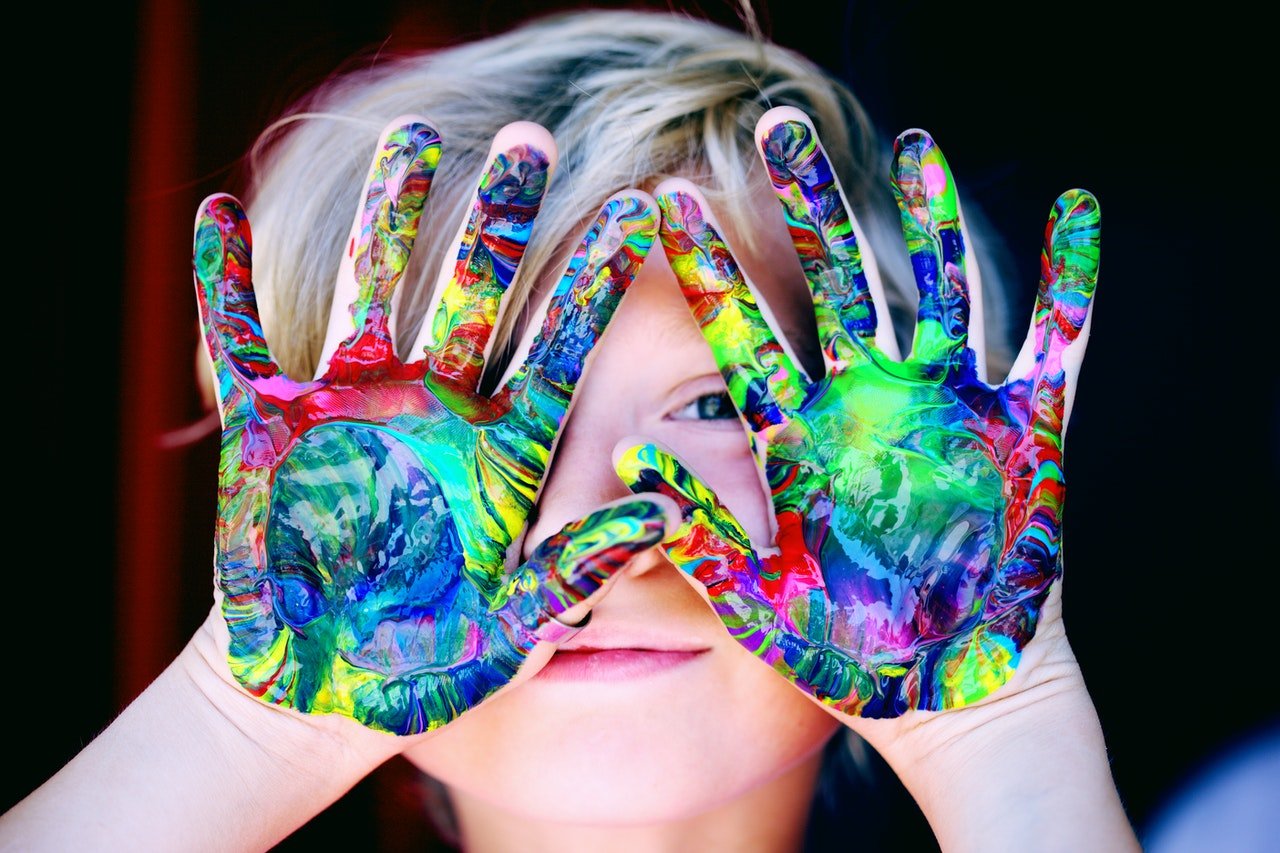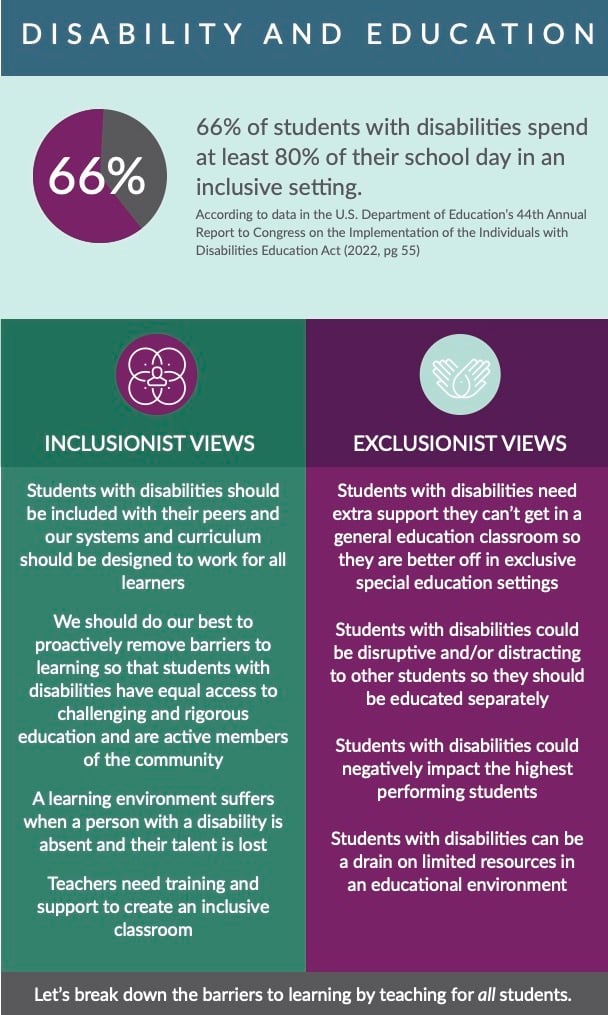The Pew Research Center recently updated their statistics on disability education in America.
- There are 7.3 million disabled students in our schools (K-12) or 15% of the school population.
- The number of students needing special education services has risen 14.7% since 2010-2011.
- The highest percentage of need is in specific learning disabilities like dyslexia and speech or language impairment (see chart). Children with autism have grown from 1.5% of the population in 2010-2011 to 12.2% in 2021-2022.
- Males are 65% of the population and 47% white.
According to data in the U.S. Department of Education’s 44th Annual Report to Congress on the Implementation of the Individuals with Disabilities Education Act (2022, pg 55), 66.2% of students with disabilities are spending at least 80% of their school day in an inclusive setting. This percentage is a huge improvement over decades past – when students with disabilities were most often segregated from their peers and has grown 3% over the last four years – but we can still do better. The good news is that only 4.9% of students with disabilities were educated outside of the classroom.
Moving to a more inclusive and equitable education system requires a thorough review of our existing structures, practices, teacher pre-service and professional learning, and views to ensure it is done successfully. Educating students with disabilities in general education classrooms requires special considerations and an overhaul in how we teach. It requires that we remove barriers to learning and provide appropriate support for our students and educators.
Research has shown that students with disabilities are much more successful when they are educated in an inclusive classroom setting and that students with the highest aptitudes are not negatively impacted by being in the same classroom with their peers who also receive special education or who have disabilities. Studies show that even the most advanced students also benefit from an inclusive classroom. For a review of the research, review pages 37-40 of this report from the National Council on Disability. This report also reminds us that “inclusion is not a place, but rather a systemic approach to uniquely addressing student learning and social engagement within the same instructional frameworks and settings designed for the whole school community.”
It isn’t surprising that there are some fierce opponents to inclusive classrooms. While some of this opposition comes from families of students with disabilities showing genuine concern for their child’s wellbeing or from parents who worry their own neurotypical students won’t excel in these circumstances, much comes from fear resulting from ableist views of disabilities.
“Ableism” is defined as discrimination (often from well-meaning people) against those with disabilities, regardless of whether that disability is physical, mental, emotional, etc. Ableist views often look at disability as a weakness, lack of ability, something to be ashamed of, or helplessness. Since schools were not designed around students with disabilities, it is not a surprise that those students have not always succeeded there.
While some people with disabilities want their peers and members of the community to look beyond their disability to see who they are outside of the label, other people with disabilities believe their disability helps define who they are as individuals and helps empower them to better understand themselves. Nina G, a comedian and active member of the disability community, stated, “Disability is community and power. Disability definitely isn’t a bad word.”
Ableist views are often associated with anti-inclusion or exclusionist sentiments. We hope to shed some light on disability and inclusion in education through the infographic below to help us get closer to full inclusion. All students deserve to be supported and challenged while developing meaningful relationships with their peers and building community.
Disability and Education
- 66% of students with disabilities are spending at least 80% of their school day in an inclusive setting, according to data in the U.S. Department of Education’s 44th Annual Report to Congress on the Implementation of the Individuals with Disabilities Education Act (2022, pg 55).
Inclusionist Views of Disability
- Students with disabilities should be included with their peers and our systems and curriculum should be designed to work for all learners
- We should do our best to pro-actively remove barriers to learning so that students with disabilities have equal access to challenging and rigorous education and are active members of the community
- A learning environment suffers when a person with a disability is absent and their talent is lost
- Teachers need training and support to create an inclusive classroom
Exclusionist Views of Disability
- Students with disabilities need extra support they can’t get in a general education classroom so they are better off in exclusive special education settings
- Students with disabilities could be disruptive and/or distracting to other students so they should be educated separately
- Students with disabilities could negatively impact the highest performing students
- Students with disabilities can be a drain on limited resources in an educational environment
Let’s break down the barriers to learning by teaching for all students.
Continue Learning:
- Explore professional development opportunities
- Discover the right online course for you. We recommend Bridging the Gap Between Special Education and General Education Practices
- Check out the blog
This post has been updated since its original publish date of May 2019.




